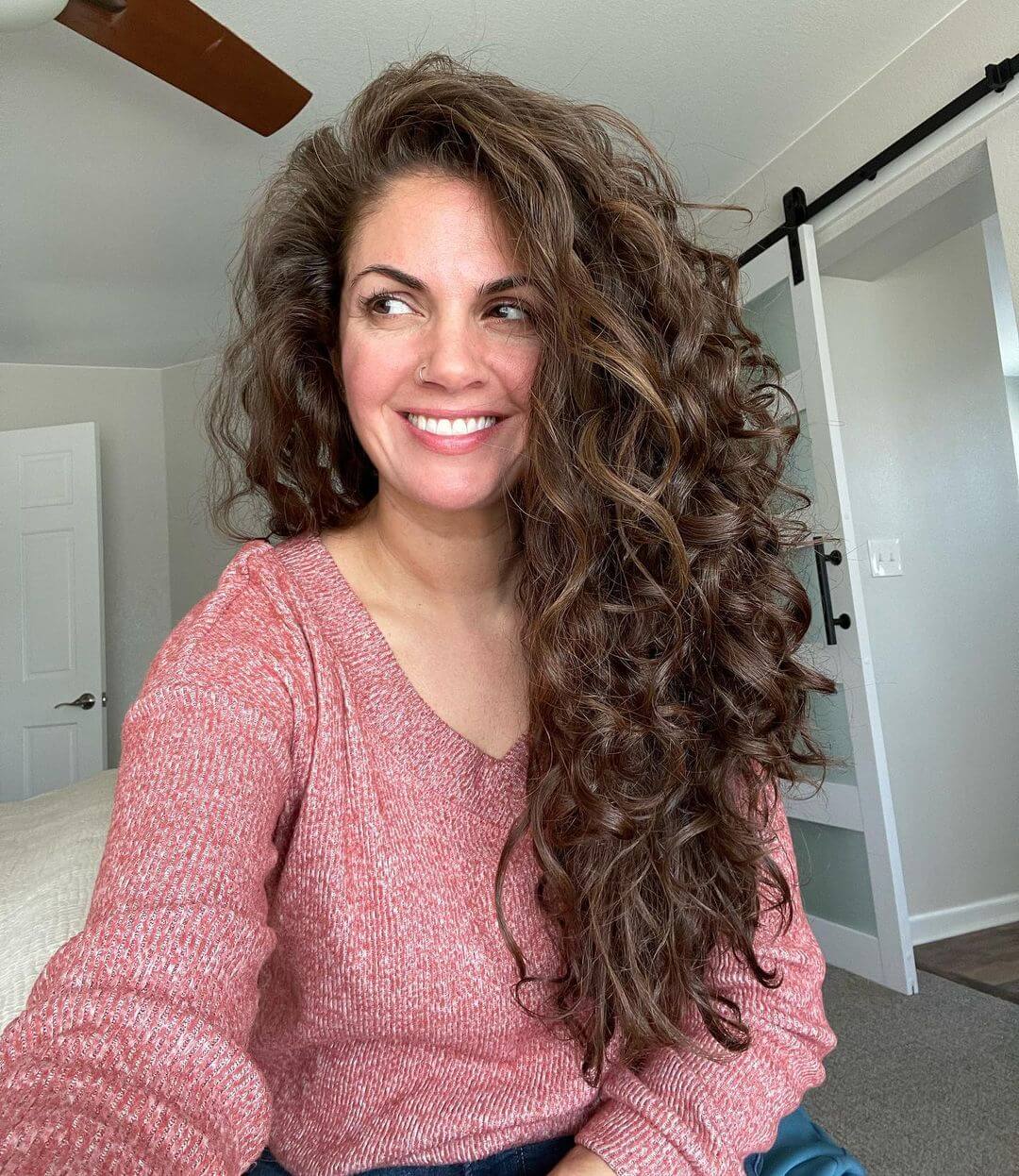Introduction
Have you ever wondered what type of hair you have? The answer can help you get the best care for it. Knowing your hair type is also useful if you’re thinking about coloring or perming your hair, because different types of strands require different products and techniques.
But first, let’s break down the basics: There are four main types of hair—straight, wavy, curly and coarse; and each one comes in varying degrees of thickness and length. So even though your friend may have similar-looking locks as yours does now, it doesn’t necessarily mean their strands will behave exactly the same way when subjected to heat styling tools or chemicals that alter texture.
Straight Hair

IG / djs_lhw
Straight hair is the most common type, and it’s easy to see why. Whether you have naturally straight strands or you style them that way, this type of hair is shiny and smooth. Straight hair tends to be very manageable, making it ideal for those who want a simple look.
However, there are some downsides too: because of its lack of volume (compared with other types), straight hair has trouble holding styles–especially those that require more effort than just running a brush through your locks after washing them! This can lead to frizziness in humid weather or when exposed to excessive heat from hairdryers or curling irons–and if you don’t take care of it properly then split ends could start appearing sooner than later!
Wavy Hair

IG / unite_hair
Wavy hair is often described as “S” or “Z” shaped and has an uneven texture. It’s also known as curly-straight, because it can be difficult to style and keep straight. Here are some tips for caring for your wavy hair:
- Use sulfate-free shampoo: Sulfates can strip your hair of its natural oils, which can lead to dryness and frizz. Look for a sulfate-free shampoo that is designed for wavy or curly hair.
- Condition regularly: Wavy hair tends to be more prone to dryness than straight hair, so it’s important to use a conditioner regularly. Look for a conditioner that is designed for wavy or curly hair and apply it from mid-length to the ends of your hair.
- Comb your hair gently: Wavy hair can be prone to tangles, so it’s important to comb your hair gently to avoid breakage. Use a wide-tooth comb or your fingers to detangle your hair when it’s wet, and avoid brushing your hair when it’s dry.
- Avoid heat styling: Heat styling tools like flat irons and curling irons can damage your hair and make it more prone to frizz. Try to avoid using these tools as much as possible, and if you do use them, use a heat protectant spray first.
- Embrace your natural texture: Wavy hair is beautiful, so embrace your natural texture and let your waves shine! Instead of trying to straighten or curl your hair, work with your natural texture and use products that enhance your waves.
Curly Hair

IG / wavescurlswhatever
Curly hair is prone to frizz and breakage, so you need to be careful when caring for it. Use a leave-in conditioner to keep your curls hydrated and moisturized, but avoid products that are too heavy or greasy–they will weigh down your hair and make it look dull. A good styling product will help you control the frizz by defining each strand of curl individually so that they appear more defined than usual.
Use a wide-toothed comb or brush to detangle your curls before washing them; this will reduce damage from tangles caused by brushing wet hair with a regular comb or brush (which can cause split ends). If possible, wash curly hair less often–washing too much can strip away essential oils from the scalp which may lead to dryness at the roots of the shafts where they meet with those pesky little hairs called “follicles.” If this happens often enough over time then eventually there won’t be enough oil left behind anymore because you’ve washed away all its reserves!
Coarse Hair

IG / lady_anngelo
Coarse hair is thicker and stronger than fine hair. It’s also more difficult to style, and tends to frizz easily. However, coarse hair has more resistance against damage than fine hair does.
If you’ve got coarse strands:
- Invest in a good conditioner that moisturizes without weighing down the strands (and don’t forget the leave-in conditioner). You’ll want something with hydrating ingredients like oil or butters like shea butter or coconut oil; these will keep your locks soft without making them greasy or waxy-looking.
- Use light-weight styling products instead of heavy gels or mousses that could weigh down your mane even further! Try using a heat protectant spray before drying out any curls with an iron; this will help maintain their shape while preventing split ends from forming over time as well–bonus points!
Fine Hair

IG / mane_ivy
Fine hair is usually straight, but can also be wavy or curly. Fine hair is more prone to breakage and damage than other hair types because it lacks the strength of thicker strands. This makes fine hair less resilient to styling tools and heat, which can cause split ends over time if not properly cared for.
Because fine strands tend to be more prone to frizziness than thick ones, they need extra moisture in order for the cuticle (the outermost layer) of each strand not only stay smooth but also lay flat against one another when wet from washing or applying product like gel or mousse before styling your locks into place with a blow dryer set on high heat.*
The good news about having fine strands is that tangles are less likely because there aren’t many knots within each individual lock; however this does mean that detangling takes longer due to fewer snags when separating sections at once during washing/conditioning sessions.
Conclusion
Knowing your hair type is the first step to getting a good haircut and caring for your locks. If you have fine hair, you don’t want a cut that will weigh it down or make it look too thick. If you have coarse hair, you should avoid blow drying because heat can cause damage. And if your strands are curly or wavy, then they probably need more moisture than straight hair types do!